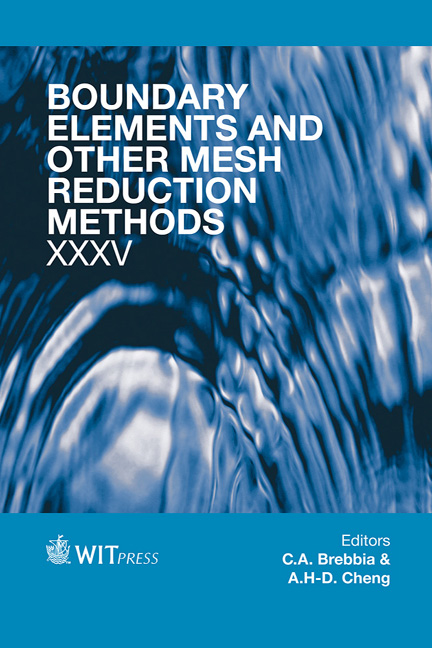Iterative Coupling Between The MFS And Kansa’s Method For Acoustic Problems
Price
Free (open access)
Transaction
Volume
54
Pages
10
Page Range
123 - 132
Published
2013
Size
568 kb
Paper DOI
10.2495/BEM130121
Copyright
WIT Press
Author(s)
L. Godinho, D. Soares Jr., A. Pereira & C. Dors
Abstract
In the present work, a numerical frequency-domain model based on the joint use of two distinct meshless methods (the Method of Fundamental Solutions and Kansa’s Method) is discussed. In this context, the MFS is used to model the homogeneous part of the propagation domain, while the Kansa’s Method is applied to model the presence of possible heterogeneities. For Kansa’s Method, the MQ RBF is used, and the optimal value of its free parameter is computed by minimizing the residual of the PDE throughout the subdomain. The coupling between the two parts of the propagation domain is performed iteratively, allowing totally independent spatial discretizations to be used for each of the sub-domains of the model. Given this strategy, the use of matching collocation points at common surfaces is not necessary. To improve the behavior of the iterative process, an optimized algorithm, based on the use of a varying relaxation parameter, is used to speed up and/or to ensure the convergence of the iterative coupling. A set of numerical results is here presented to illustrate the behavior of the proposed strategy in terms of convergence. Keywords: MFS, Kansa’s method, acoustics, iterative coupling.
Keywords
MFS, Kansa’s method, acoustics, iterative coupling





